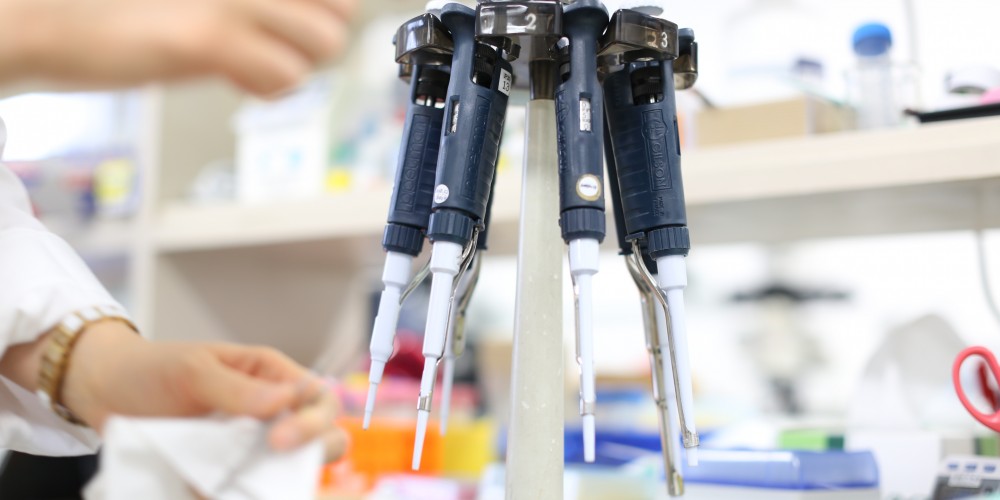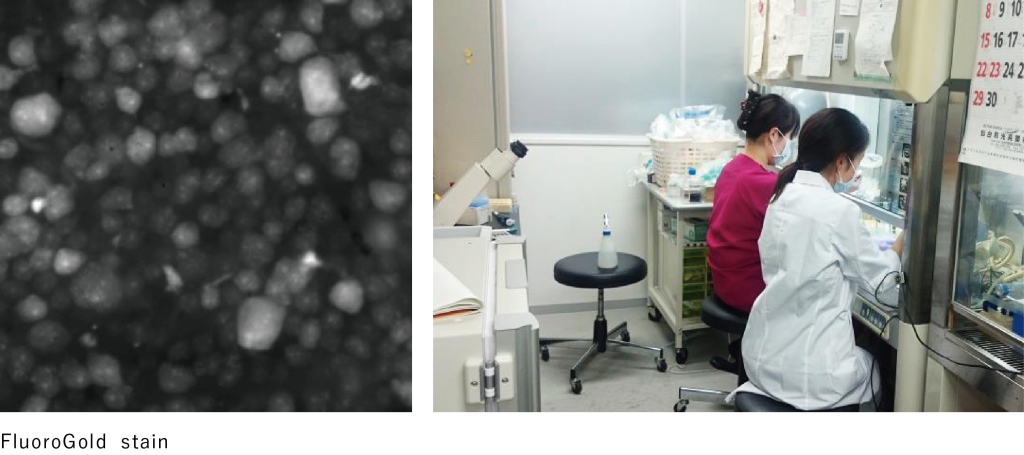留学生へ Student from overseas

Neuroprotection Team
The team focuses on the search for biomarkers and development of treatments for glaucoma, a neurodegeneration of the retinal ganglion cells (RGCs), the pathomechanism of which is largely unknown. Research extends from analyzing patient samples using cutting edge genetic analysis, RNA sequencing, and metabolomics analysis to studying pathogenesis of animal models of glaucoma and screening of therapeutic molecules using drug libraries.

Applied Genetics Team
The main interest of the team is to enhance or generate vision through AAV-mediated gene therapy and pharmacological intervention targeting hereditary retinal dystrophies with poor visual prognosis, using mouse models. The emphases are placed on the assessment of “quality of vision” and tracing of “the entire visual pathway” including that in the brain. Neuroscientific approaches applied include functional labeling and imaging of neurons, electrophysiological recordings to assess the visual pathway both in the retina and the brain, and behavioral studies.

Immunology Team
Under pathological conditions (i.e., inflammation), monocytes/macrophages have a critical role in inducing and suppressing both hem- and lymphangiogenesis. It is well known that macrophages can adopt a variety of status depending on the exposed environments, defined by the patterns of cytokine secreted in situ. The team is currently seeking to understand which macrophage functions are most important for inducing or suppressing both hem- and lymphangiogenesis under such pathological conditions. Furthermore, the role of the microglia and macrophages in choroidal and retinal diseases is investigated in the following rodent models; 1. Normal retinal vascular development, 2. Laser-induced choroidal neovascularization, 3. Experimental autoimmune uveitis, 4. Optic nerve crush.
Types of routine lab techniques used
☆ DNA engineering
☆ Genotyping (PCR, sequencing, Taqman analysis)
☆ Protein synthesis and purification
☆ RT-PCR and RNA sequencing
☆ Westernblot and immunohistochemistry
☆ Tissue and cell culture
☆ Adeno-associated virus production
☆ Single cell in vivo imaging of labeled cells
☆ Surgical intervention (intraocular, intracranial, peritioneal, intravenous injections… etc.)
☆ Electrophysiology (Electroretinogram and Visually Evoked Potentials)
☆ Behavioral assessment
Prerequisites
☆ Graduated from University or an equivalent Institute.
☆ Able to speak either English or Japanese.
☆ Able to support oneself the cost of living during the program.
☆ Experience in basic experiment
Interview and Lab visit
We always welcome requests for interviews and lab visits. Please contact Research Manager Koji Nishiguchi (nishiguchi”at” oph.med.tohoku.ac.jp) for inquiries.
Useful link
Guideline for Post-graduate Program, Tohoku University School of Medicine.Students are admitted to the Program twice a year (October and April) for which application should be sent in the preceding months (see the link below for details).http://www.med.tohoku.ac.jp/english/post-grad/index.html




